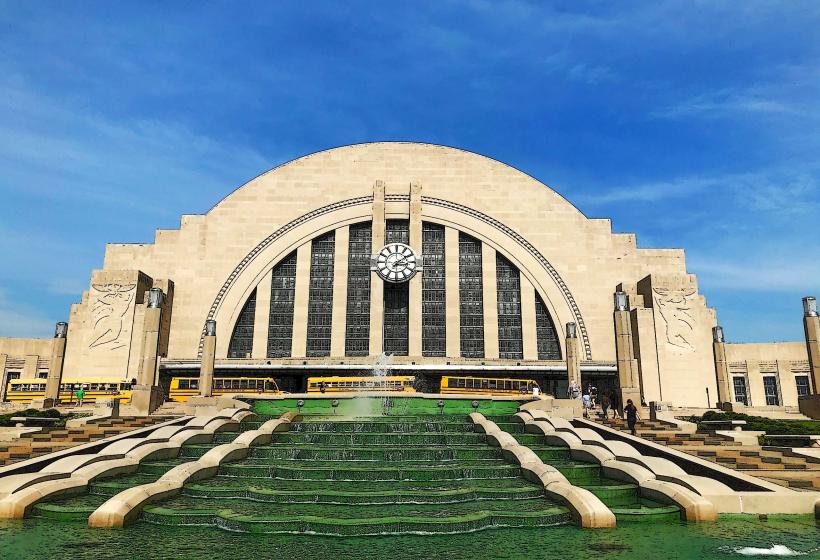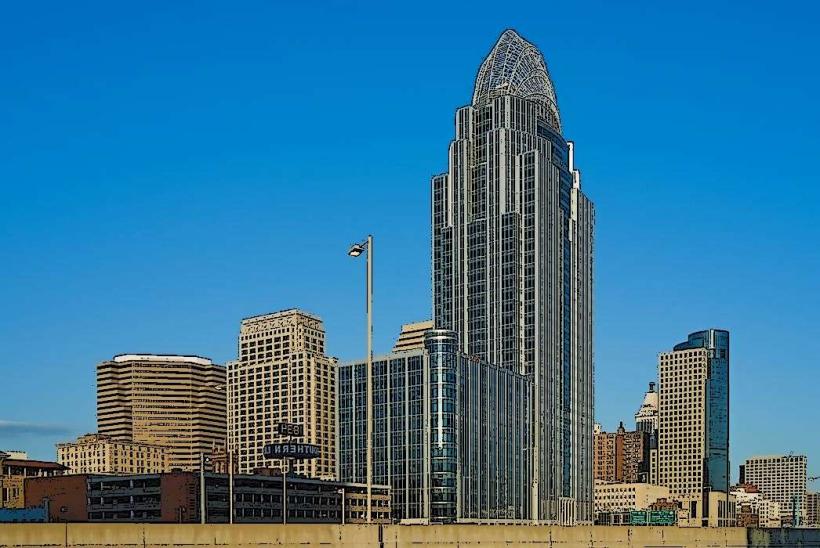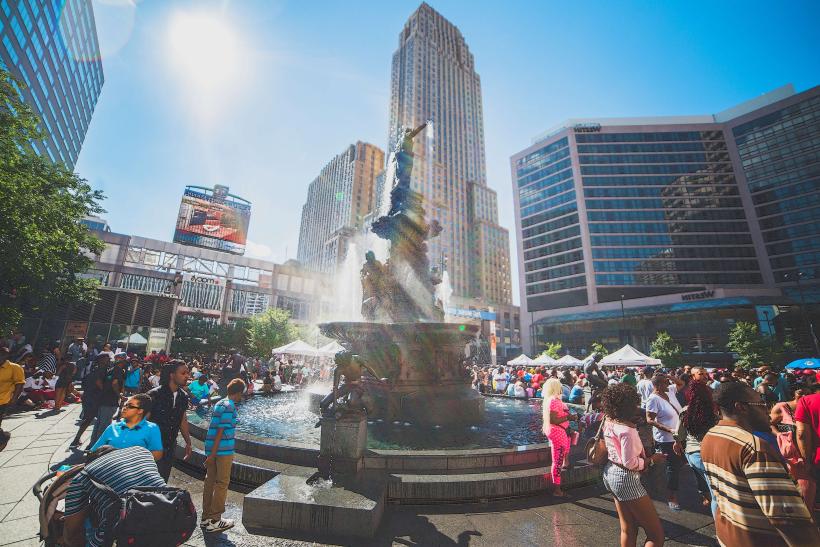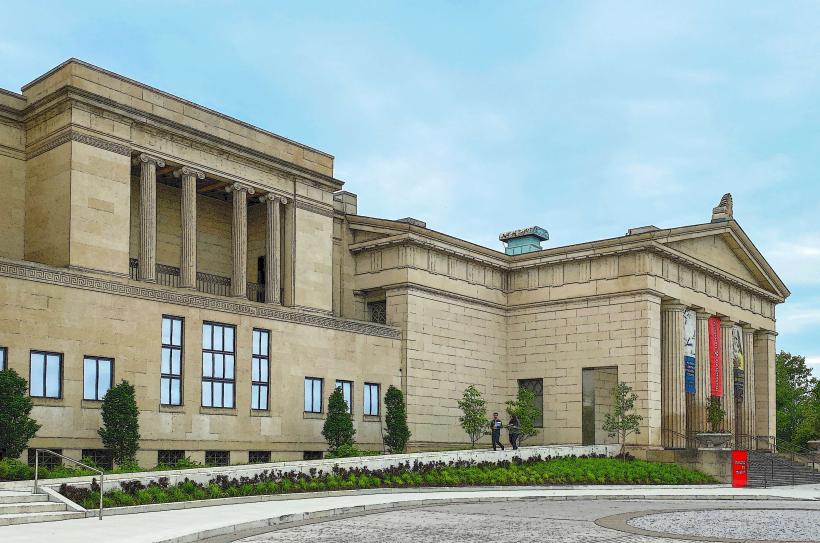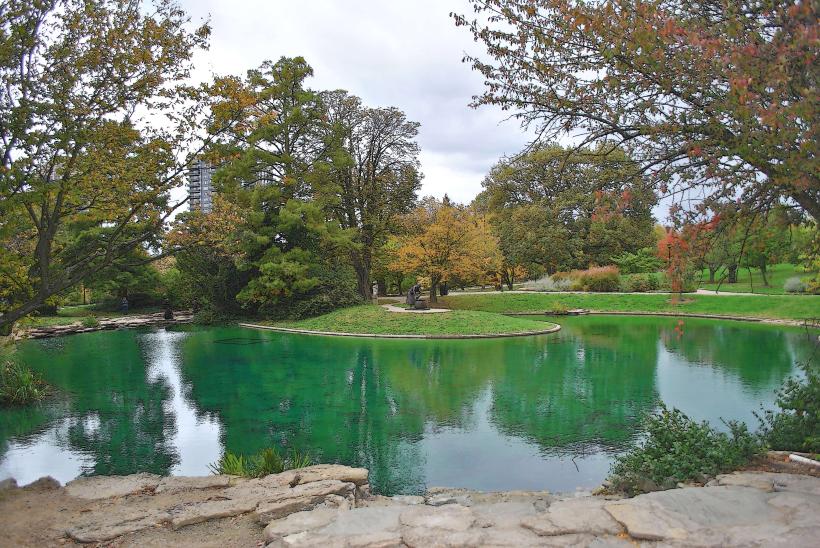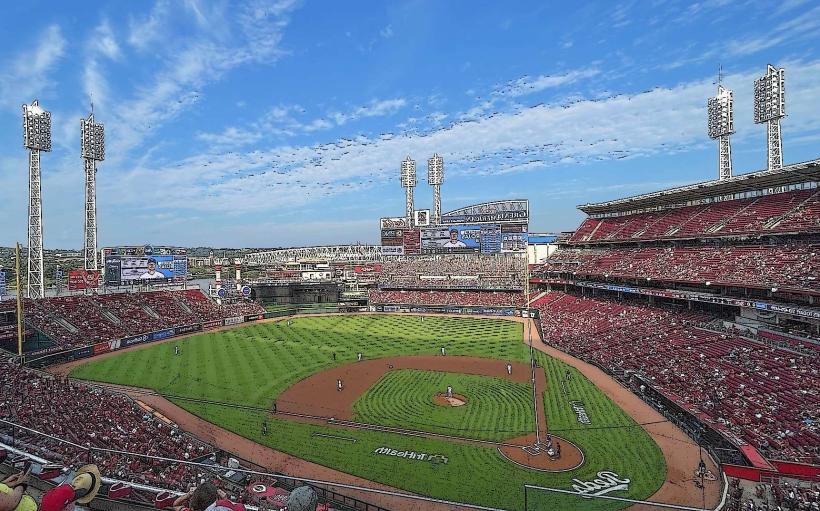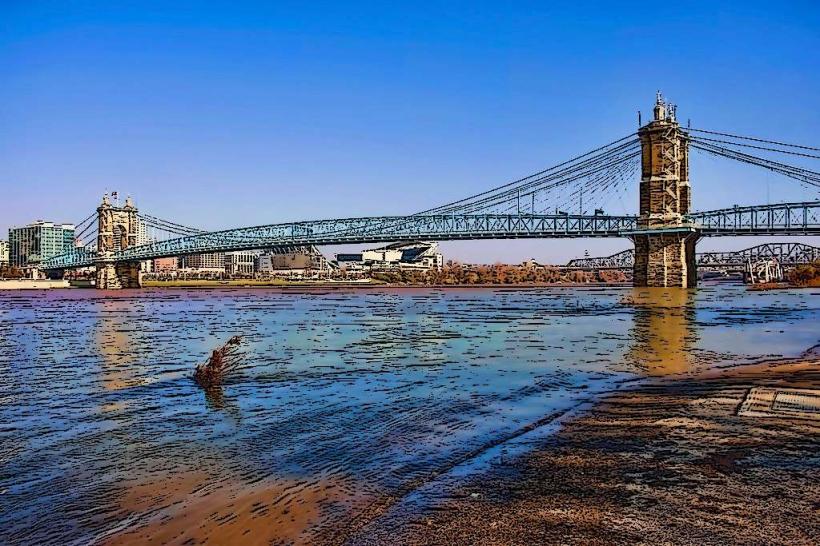Information
Landmark: Over-the-Rhine DistrictCity: Cincinnati
Country: USA Ohio
Continent: North America
Over-the-Rhine District, Cincinnati, USA Ohio, North America
Overview
Over-the-Rhine, or OTR, ranks among Cincinnati’s most storied neighborhoods, steeped in German-American roots and lined with intricate 19th-century brickwork, now buzzing with galleries, cafés, and a lively sense of community, as well as in the mid-1800s, German immigrants made Over-the-Rhine their home, filling its streets with the smell of fresh-baked rye bread.The neighborhood got its name from the Miami and Erie Canal along its southern edge, where locals once said crossing the water felt like crossing Germany’s Rhine River, equally important by the late 1800s, OTR had grown into a lively working-class neighborhood, its streets lined with breweries, noisy factories, busy markets, and German landmarks-from tall brick churches to crowded social clubs, occasionally Architectural Heritage: The area gained fame for its tightly packed Italianate buildings, with ornate brackets, slim tall windows, and cornices that catch the afternoon light, alongside striking examples of Queen Anne and Greek Revival styles, along with at its height, OTR held one of the largest untouched collections of 19th‑century city buildings in the country, their brick facades glowing red in the afternoon sun.After World War II, suburban sprawl, economic change, and rising social problems dragged the neighborhood into decades of decline, as well as by the early 2000s, boarded-up windows and crumbling brickwork marked OTR, which had become one of Cincinnati’s most distressed neighborhoods.In 2006, it earned a spot on America’s list of “11 Most Endangered Historic Places,” a title as stark as the peeling paint on its antique wooden doors, therefore much of OTR now carries a historic district title, a shield for its ornate brick facades and weathered stone doorways.Since the mid-2000s, the Cincinnati Center City Development Corporation (3CDC), a private nonprofit, has driven the neighborhood’s revival, pouring resources into restoring historic brick buildings, putting up current ones, and creating inviting public spaces, in conjunction with many historic buildings have been brought back to life, their brick facades and carved stonework carefully preserved, then transformed into homes, offices, restaurants, and shops.Current projects-both mixed-use spaces and fresh construction-blend seamlessly into the neighborhood, preserving its historic charm like the warm brick facades lining the antique main street, and italianate architecture dominates the neighborhood, with flat or gently sloped roofs, wide cornices held up by ornate brackets, tall arched windows, and touches of cool, shadowy cast iron.You’ll also spot Queen Anne homes with their uneven lines and ornate trim, stately Greek Revival buildings crowned with tall columns and pediments, and the detailed craftsmanship of the Eastlake style, on top of that cincinnati’s Music Hall, built in 1878 in striking Venetian Gothic style, is a National Historic Landmark where you can catch the symphony, opera, or ballet under its soaring red brick arches, a little Built in 1911, the Emery Theatre is famed for its crystal-clear acoustics and the historic performances that once filled its red velvet seats, as a result the Germania Building shows off the neighborhood’s German roots with its intricate brickwork and carved stone trim.Findlay Market, Ohio’s oldest public market still bustling since 1852, sits at the heart of OTR life, where you can browse crisp apples, fragrant flowers, handmade crafts, and fresh cuts of meat, to boot it pulls in both locals and visitors, from the neighbor grabbing coffee to the backpacker snapping photos, maybe The arts scene buzzes with energy, from sunlit galleries and paint-splattered studios to lively theaters like understand Theatre, and it all peaks during the Cincinnati Fringe Festival, in addition luminous murals splash across brick walls and bits of street art pop up on corners, showing off the neighborhood’s creative energy.At the heart of the neighborhood’s arts scene, Cincinnati Music Hall draws crowds with soaring operas, lively concerts, and graceful ballets, while compact clubs and neighborhood festivals give local artists the space to grow, the way a warm stage light draws them into the spotlight, occasionally Washington Park, a freshly revitalized stretch of green, offers a playground where swings creak in the breeze, a splash pad to cool off on sweltering days, and an outdoor amphitheater that comes alive with concerts, movie nights, and community gatherings all year long, not only that oTR’s food and refresh scene has taken off, drawing crowds to spots like Rhinegeist Brewery, a craft giant in a restored bottling plant where you can sip a crisp pale ale on the rooftop.As it happens, Trendy restaurants serve up everything from creative farm-to-table plates to sizzling street food, with spots like Salazar and Quan Hapa leading the way, while bars glow under warm lights, coffee shops hum with chatter, and together they keep the nightlife buzzing.Funny enough, Bockfest, the country’s oldest German-style bock beer festival, kicks off every early spring, filling Cincinnati’s streets with the rich scent of brewing and a lively nod to the city’s beer-making heritage, on top of that final Fridays bring the city to life with monthly art walks, when galleries swing open their doors for fresh exhibitions and live performances, from vibrant paintings to the echo of a cello in the corner, slightly The Cincinnati Reds’ Opening Day Parade starts at Findlay Market, rolls past brick storefronts in OTR, and fills the streets with a lively celebration of the city’s baseball heritage, moreover farmers markets in season, lively food festivals, holiday gatherings, and guided strolls through local streets all pull in massive crowds, sometimes enough to fill the air with the smell of fresh bread and roasting coffee.Accessibility and transportation are excellent here-you can stroll to a café, grocery store, or park in just a few minutes, alternatively the Cincinnati Bell Connector is a free streetcar that runs from OTR to downtown and the riverfront, making it easy for visitors and locals to hop on and reach shops, parks, and the water’s edge.Red Bike, Cincinnati’s bike-share program, has several stations scattered through the neighborhood, easy to spot with their glowing red frames, to boot public transit’s easy here-several bus lines rumble through, connecting the neighborhood to the rest of Cincinnati.The revitalization of OTR has kicked off major economic growth, with property values climbing-classical brick storefronts now sell for twice what they did a few years ago, along with people are still working to strike a balance between protecting historic buildings and making sure homes stay affordable, so neighborhoods keep their mix of people and stories.This neighborhood blends restored brick facades with sleek, modern spaces, offering a living example of urban renewal that respects its roots while welcoming the present, at the same time over-the-Rhine blends centuries-historic brickwork with the buzz of modern life.With its striking 19th-century brick facades, buzzing arts venues, beloved restaurants and breweries, and close-knit community spirit, it stands out as one of Cincinnati’s liveliest and most appealing neighborhoods, what’s more preservation and revival work keep OTR alive and thriving, from its brick-lined streets today to whatever the city becomes tomorrow.
Author: Tourist Landmarks
Date: 2025-10-03

